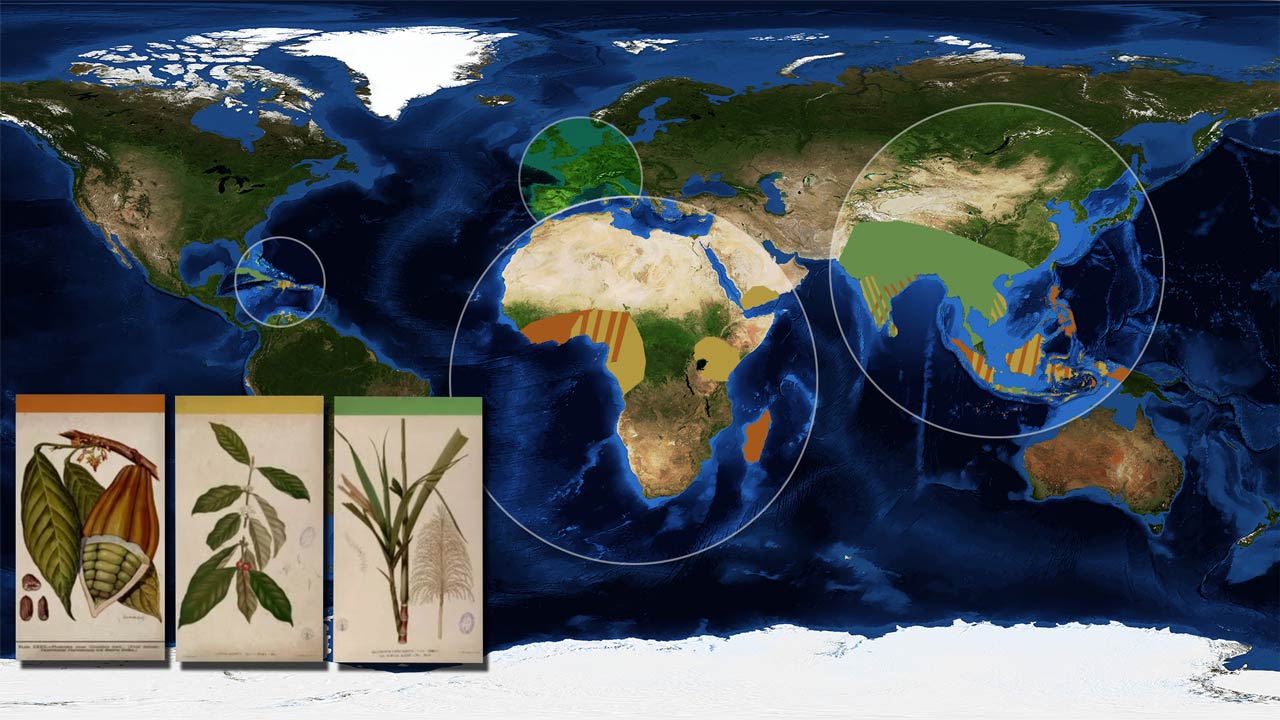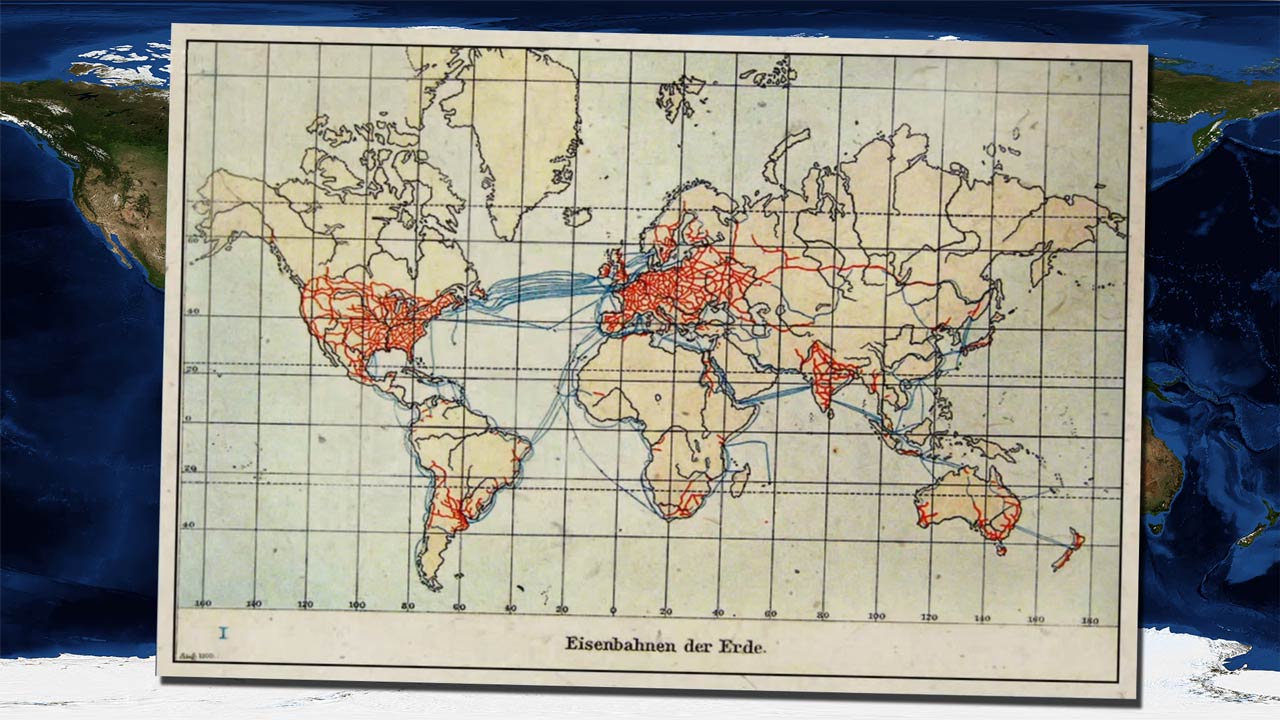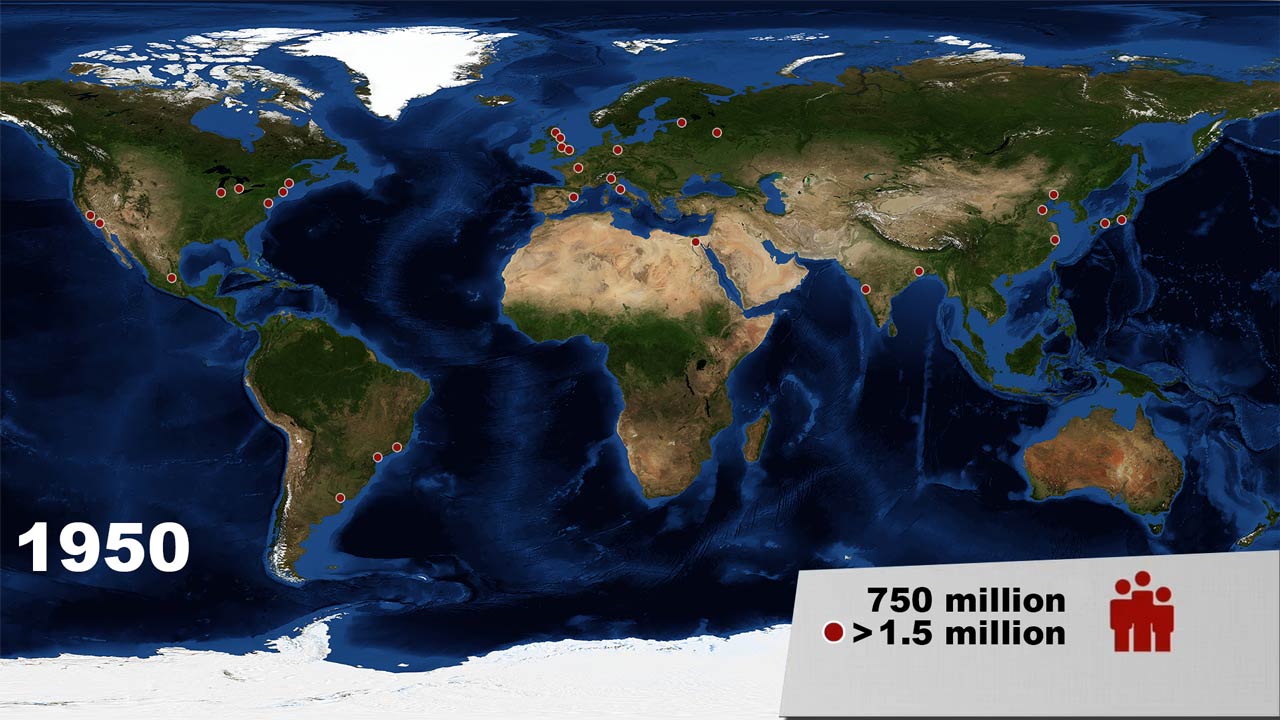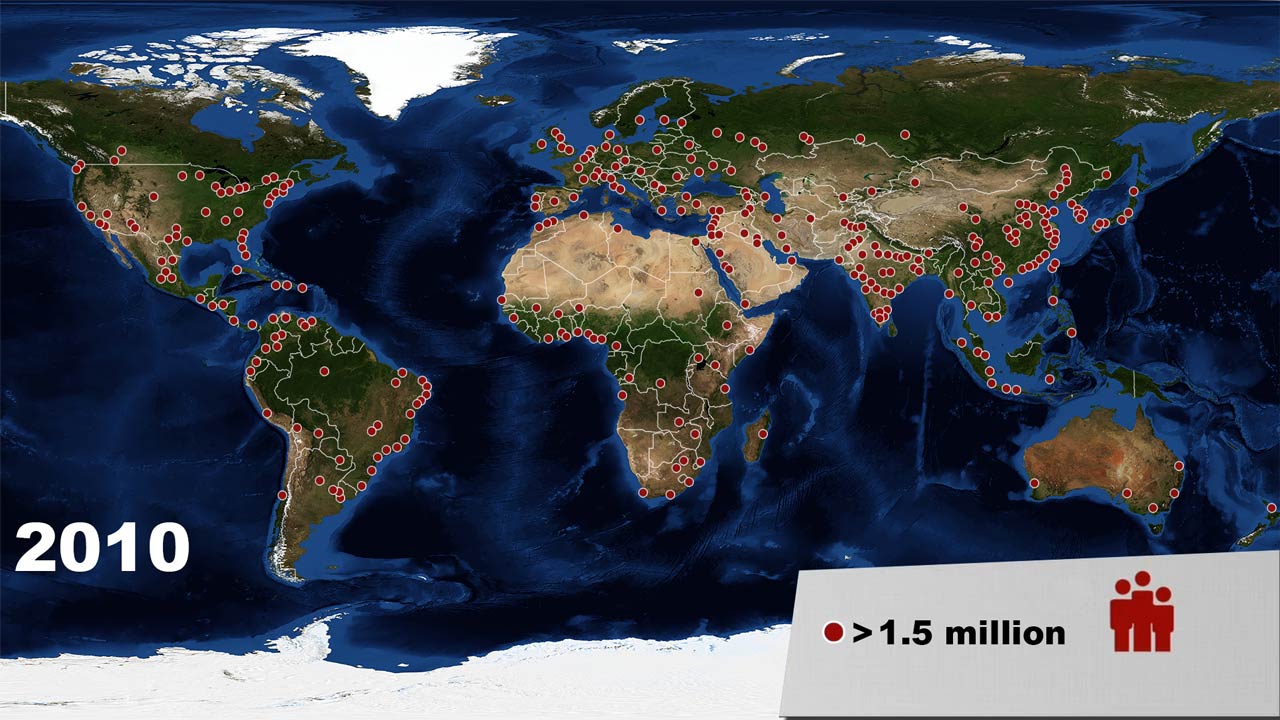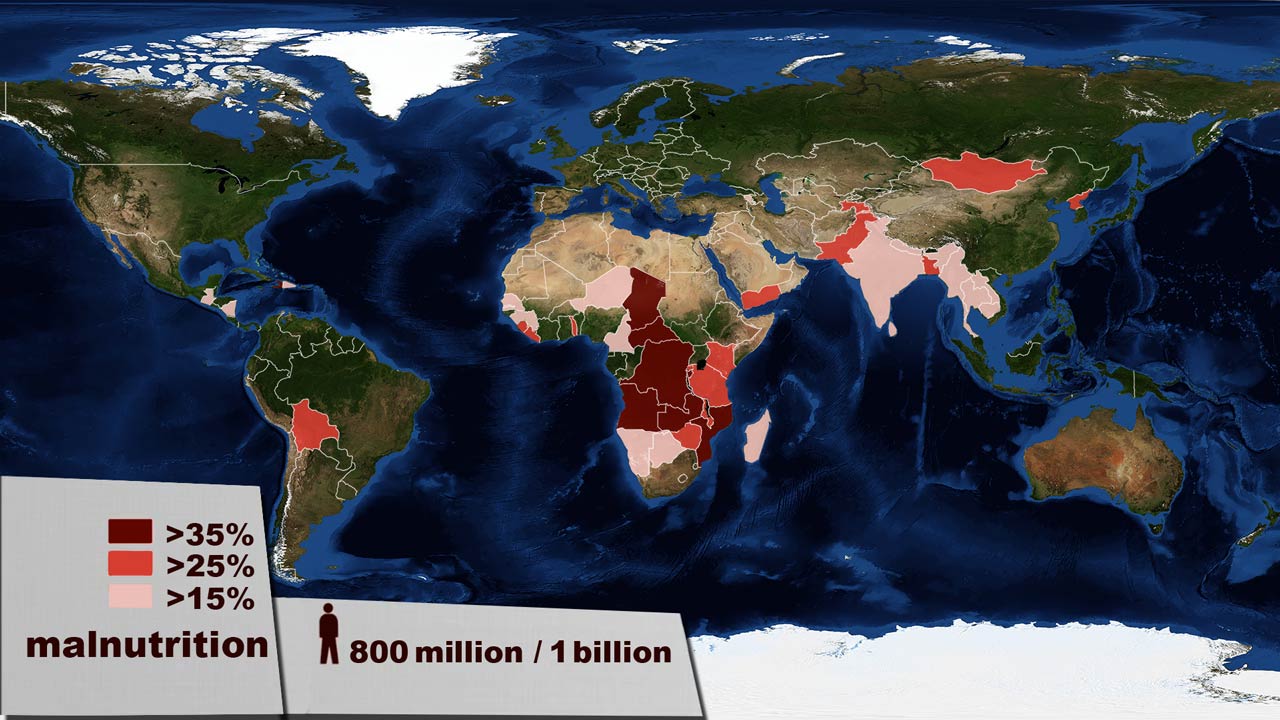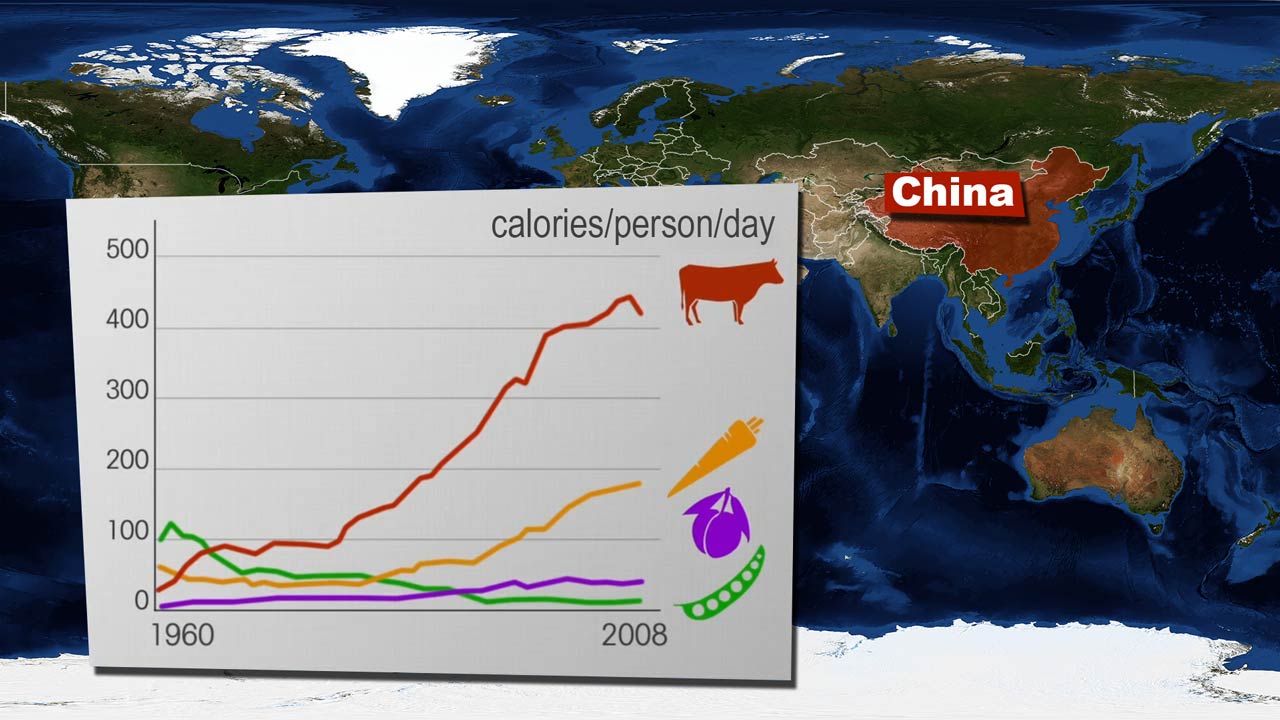Today we have a look at the Globalization of Food and its consequences for society and health.
The Three Main Cultivation Methods
Before the beginning of the new ages existed three main cultivation methods: rice, wheat and corn.
In North America became the United States the first breadbasket of the world, after agricultural machinery were invented and after the first corn exchange opened in Chicago.
More breadbaskets arose in the so called new countries in Argentina and Australia, because there were also huge areas of cultivable land available.
The Cultivation Methods in Asia
But in Asia, Africa and the Caribbean was the situation different. Because the European Colonial Empires used those areas to grow export crops like cacao, coffee, and sugar cane.
The cultivation for own requirements was replaced by the production for the export to the home countries.
Development of Transport Network
On this map from the year 1900 can you see how everywhere in the world were railroads built to connect the production areas with the trade ports.
On the seaway could agriculture products transported further then.
Through the development of the transport networks during the industrial revolution increased the global importance of the food markets, which was additional intensified by the growth of the urban areas.
Increase of Big Cities
Because during the industrial revolution appeared a massive population growth in big cities.
In 1950 lived 750 million people in cities. To that time existed 30 cities with a higher population than 1.5 million.
The people who lived in those cities bought less local food and more standard products, which were traded globally.
Because of the increasing number of industrialized workplaces spent people less time at their homes. So rose the demand for products, which were anytime available and easy to prepare.
The number of cities with more than 1.5 million people continued to grow. 60 years later, in the year 2010 was the map like this.
And more than 80% of eaten products in those globalized cities came from the food industry.
In the mega cities of the emerging countries, whose number increased substantially, arrive more and more imported products. The eating habits in those cities get more and more similar to those in the industrial nations.
That worldwide food model has two consequences: One is of economic and social type, the other is related to public health.
The Economic and Social Consequences of the Worldwide Food Model
Worldwide exist 1.35 billion farmers. 4% of them use farm machines, fertilizers and pesticides. 22% have a draft animal, a trek ox or a draft horse. 74%, that is one billion, have only simple handsets and small areas under cultivation.
This traditional farming has certainly no chance against the industrialized agriculture.The production capacities and farming yields are simply too low.
Circumstances in Stock Farming
Similar circumstances are present in stock farming. The poultry production is a clear example to show the market disorder. Those countries produced a lot of poultry in the year 2013. The production increased a lot since the last 50 years because firstly no religion forbids to eat chicken meat in contrast to pork and beef. Secondly their breeding is cheap, since they grow fast and guarantee high yields. It takes 40 days to produce a chicken, but it takes 3 years to produce a cow.
The European Union had the biggest poultry export in the year 2013. Second came the United States and third Brazil.
The Common Agricultural Policy of the European Union grants subsidies for the production of cheap chicken meat and supports the export, especially to West Africa. The local production has no chance against that. So cost last year a from Europe imported chicken $0.22 per pound in the harbor of Dakar and $1.05 on the markets in Senegal. In Senegal bred chicken and sold on the markets alive cost up to $2.00 per pound.
Because of that price difference continues the local chicken production to decrease in opposition to the industrialized poultry production in Europe.
But during the African poultry production fights against the European, has the European production a difficult position against the production in Brazil and Thailand. So are the production costs for a full chicken in Europe $1.50, but only $1.14 in Thailand and $0.85 in Brazil, because there are lower health and ecological regulations.
The food industry sources their production more and more out, to decrease costs. That means many local markets are replaced by one large, global competition with fluctuating prices.
Situation of Coffee Production
Similar is the situation in the coffee production, which can be seen at the coffee price between 1980 and 2010. Because of that development and price fluctuations increased the malnutrition in many countries.
Malnutrition
Here can you see how large the percentage of people are, who are affected by malnutrition.
Altogether have between 800 million and 1 billion people worldwide not enough to eat. This scandalous situation should be changed within the Millennium Developments Goals of the United Nations until 2015.
Obesity
There is another consequence from the industrialized and urban eating habits, another type of false nutrition, which isn’t based on too less, but too much food: obesity.
This time do we mark the countries which have a high percentage of people with obesity.
Referring to the World Health Organization (WHO) are 1.5 billion people worldwide overweight and 500 million obese. The World Health Organization says obesity is the biggest disease in the 21st century. Obesity is noncontagious, but concerns 8% of the world population. 2.5 million people die each year as a result of diseases, which are caused by overweight.
In Iraq suffer more than 25% of the population from obesity. Because of the war stay people at their safe homes and rarely leave their houses. According to a study of the World Health Organization are 26% of men and 38% of women afflicted by obesity. Therefore is obesity a global problem. Because of sedentary lifestyle and living in the city spread obesity more and more worldwide, even in the emerging markets like in Mexico or Egypt, especially in the middle class. This development of the eating habits lead to a change, which is called “Nutrition Transition”.
China’s Eating Habits
Let’s have a look at the effects of the new eating habits by using the example of China. Since 50 years eat the people in China less legumes, but more fruits and vegetables and especially more meat, which you can see here.
Meat has more protein, but is worse for health. Large enterprises like Walmart® accelerate the development to industrialized food and the Chinese think, they increase their social value, when they visit large supermarkets and fast food restaurants.
McDonald’s® as example is also very enlightening. 1990 opened the first outlet in Shenzhen near Hong Kong. Today exist more than 2000 McDonald’s outlets in China. McDonald’s offers standard products, but tries to adapt to local cultures. That regards the eating habits, but also the strategy of communication. So run McDonalds an advertising campaign in the year 2009 on the occasion of the 60th anniversary of the People’s Republic of China. The famous slogan “i’m lovin’ it®” was changed to “i’m lovin’ it, the strong China”.
This contradiction to the western capitalism maybe funny, but the numbers aren’t funny: 1 billion people worldwide have not enough to eat, but 800 million are overweight.

